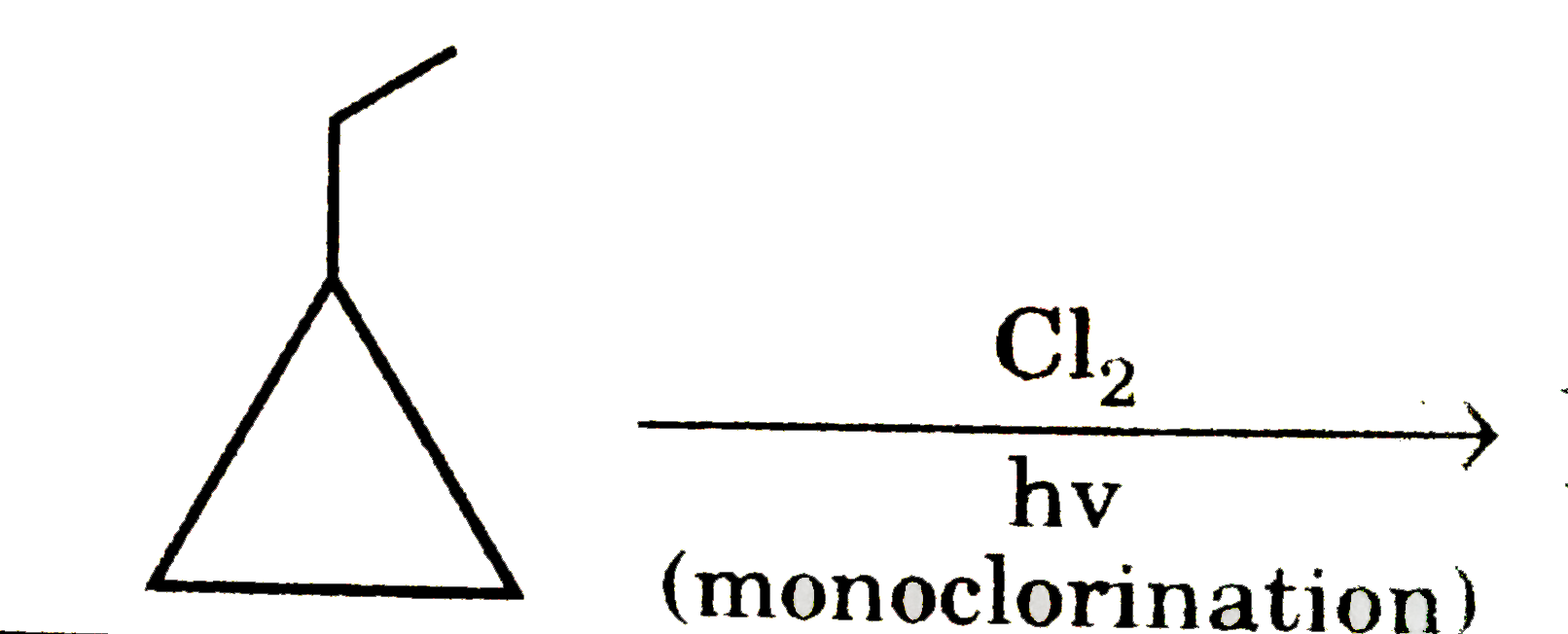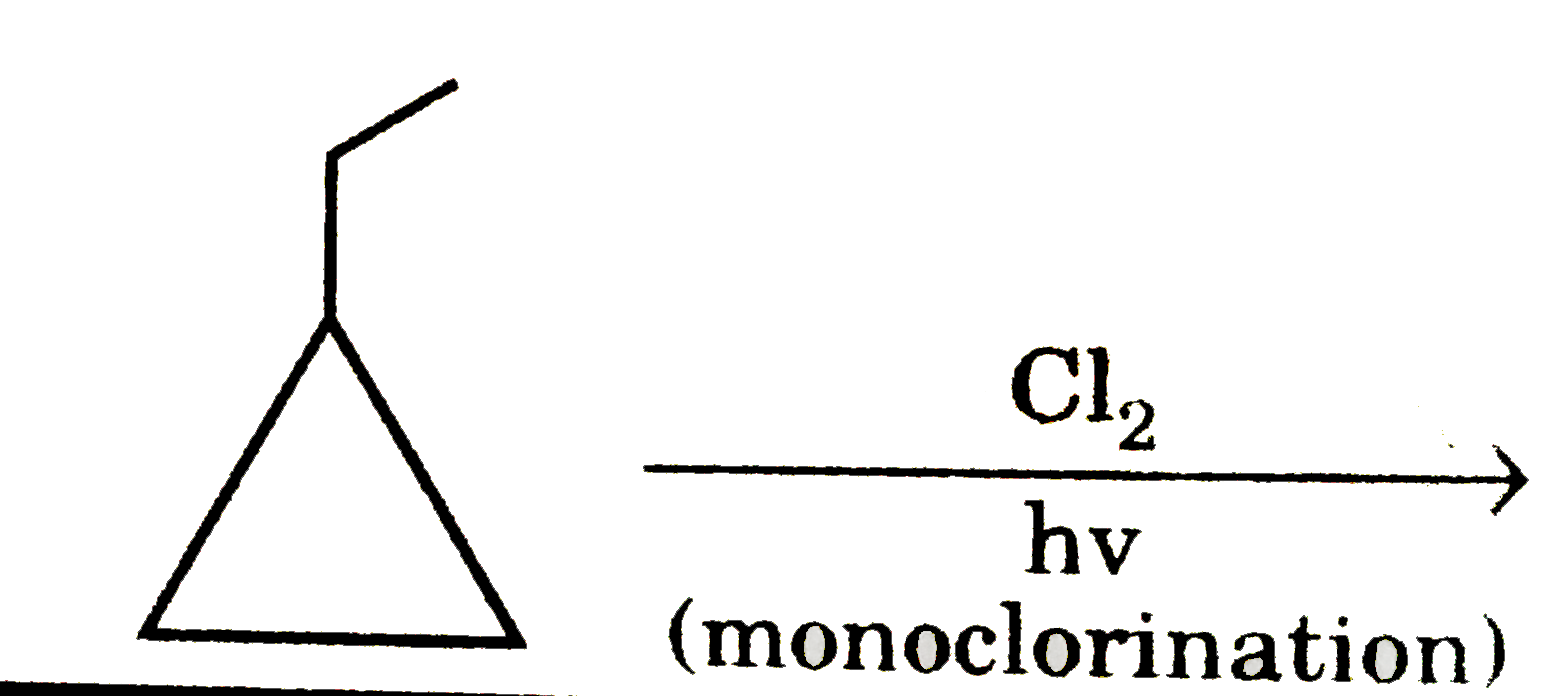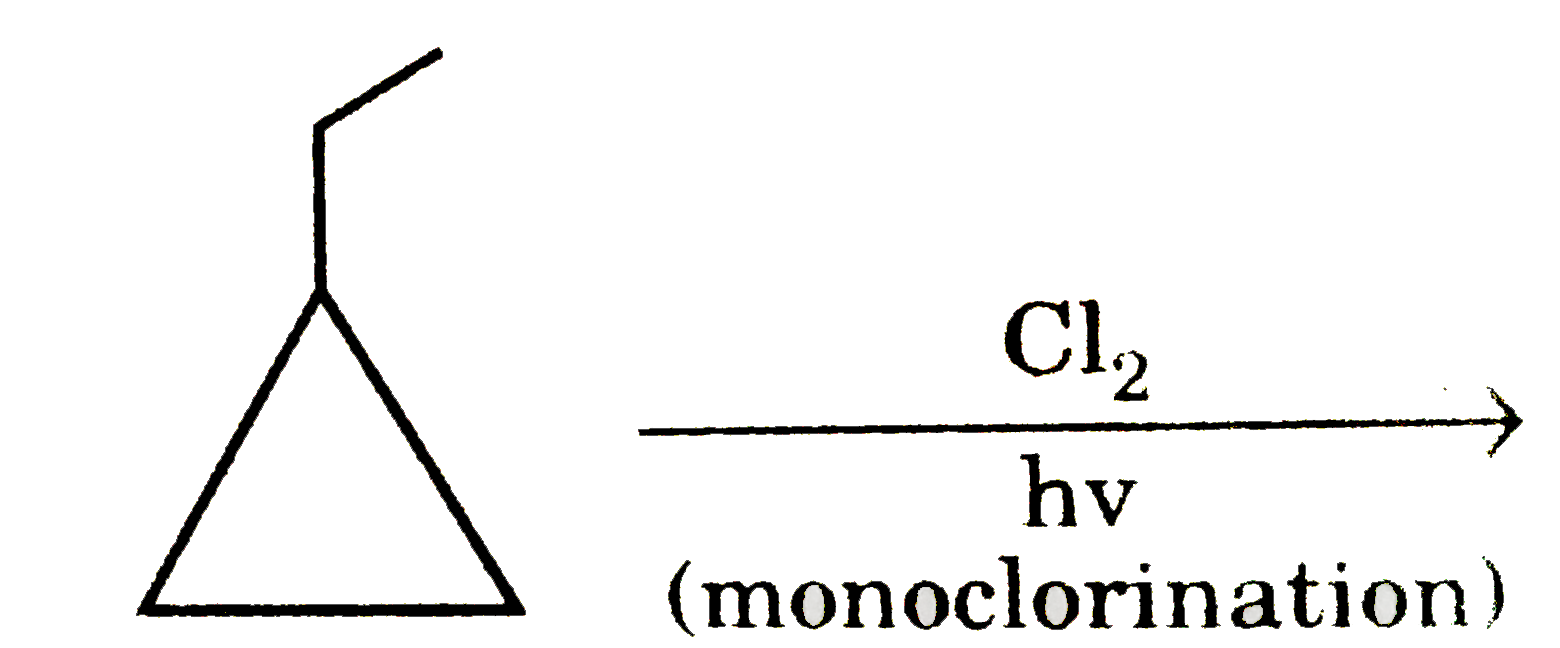Asnwer the following queestion based o given reaction.

How many fractions are present in fractions distiallation?
4
5
6
8
The correct Answer is:b
(iii) and (vii)
Topper's Solved these Questions
- ISOMERISMBOOK - GRB PUBLICATIONCHAPTER - ISOMERISMEXERCISE - MATCH THE COLUMN TYPE
22 Videos
- ISOMERISMBOOK - GRB PUBLICATIONCHAPTER - ISOMERISMEXERCISE - SUBJECTIVE TYPE
67 Videos
- ISOMERISMBOOK - GRB PUBLICATIONCHAPTER - ISOMERISMEXERCISE - MULTIPLE OBJECTIVE TYPE
71 Videos
- GASEOUS STATEBOOK - GRB PUBLICATIONCHAPTER - GASEOUS STATEEXERCISE - Exercise
530 Videos
- MOLE CONCEPT, STOICHIOMETRY & CONCENTRATION TERMSBOOK - GRB PUBLICATIONCHAPTER - MOLE CONCEPT, STOICHIOMETRY & CONCENTRATION TERMSEXERCISE - Subjective type
145 Videos
Similar Questions
Knowledge Check
Asnwer the following queestion based o given reaction.

How many products are resolvable?A2B4C5D6Asnwer the following queestion based o given reaction.

Total number of theretically products (includeing stereo ) are :A4B6C8D10A solution contain three stereo-isomers of 2, 3-dihydroxy butanedioic acid. On fractional crystallisation of this solution, two fractions: Fraction-1 and Fraction-II are separated. Fraction-I on reaction with (+)-2-butanamine gives a single salt while fraction-II on reaction with the same (+)-2-butanamine gives a mixture of two salts. answer the following three question based on the above information
(a) Molecules of fraction-I are enantiomers
(b) Molecules of fraction-I are meso compound
(c) Molecules of fraction-I are in racemic form
(d) Molecules of fraction-I has no chiral centre
What is the relationship between the molecules of fraction-I with the molecules of fraction-II?AThey are enantiomersBThey are identicalCThey are diastereomersDThey are diastereomers as well as optically active
Problems based on fractions
View SolutionProblems based on fractions
View SolutionHow to compare fractions?
View SolutionConvert the given fractions into decimal fractions :
45
View SolutionA solution contain three stereo-isomers of 2, 3-dihydroxy butanedioic acid. On fractional crystallisation of this solution, two fractions: Fraction-1 and Fraction-II are separated. Fraction-I on reaction with (+)-2-butanamine gives a single salt while fraction-II on reaction with the same (+)-2-butanamine gives a mixture of two salts. answer the following three question based on the above information
(a) Molecules of fraction-I are enantiomers
(b) Molecules of fraction-I are meso compound
(c) Molecules of fraction-I are in racemic form
(d) Molecules of fraction-I has no chiral centre
What is the relationship between the two different salts obtained from fraction-II?
View Solution
